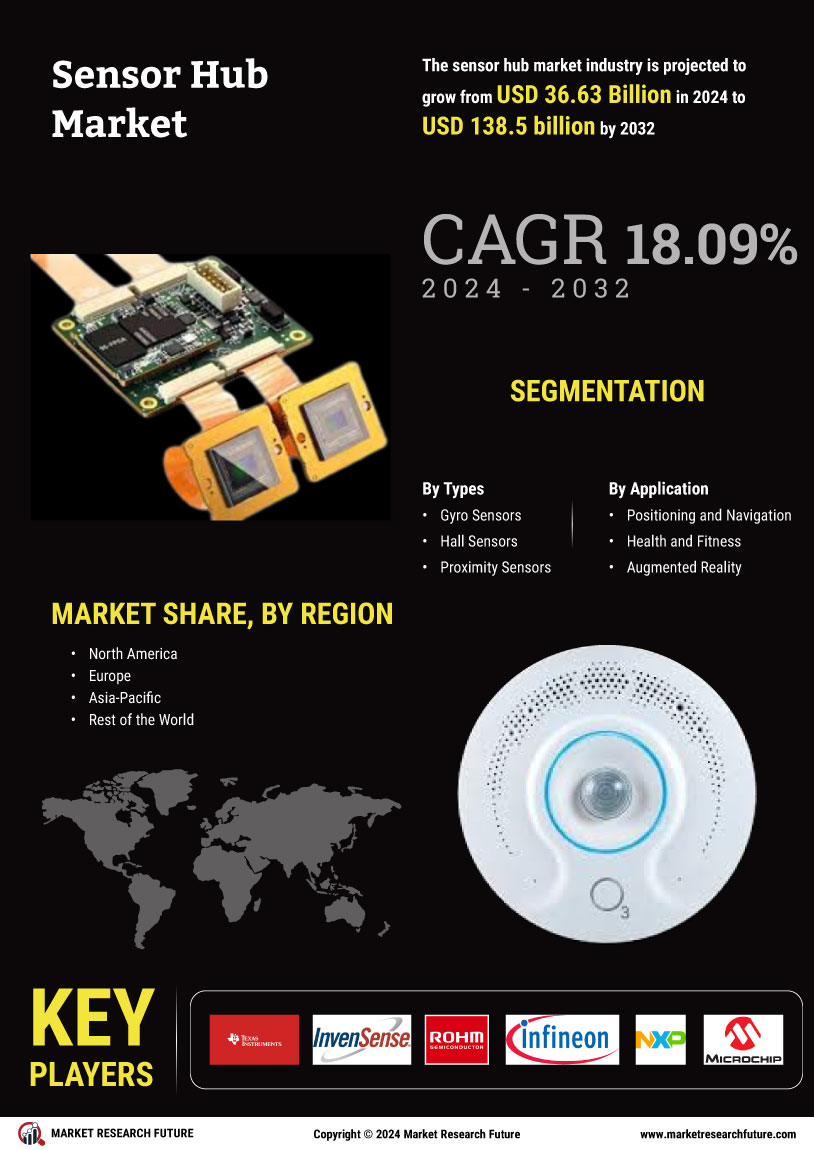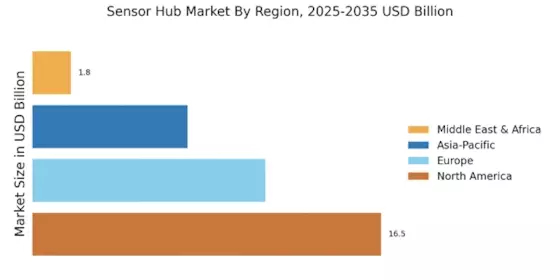Growing Focus on Smart Cities
The Sensor Hub Industry. Governments and municipalities are increasingly investing in smart infrastructure to enhance urban living conditions. Sensor hubs play a crucial role in this transformation by enabling real-time data collection and analysis for traffic management, waste management, and environmental monitoring. It is projected that investments in smart city technologies will reach over 1 trillion by 2025, creating substantial demand for sensor hubs. This trend suggests that the Sensor Hub Market will experience significant growth as cities seek to implement intelligent solutions that improve efficiency and sustainability. The integration of sensor hubs into urban planning is likely to become a standard practice, further solidifying their importance in modern infrastructure.
Rising Demand for IoT Devices
The increasing proliferation of Internet of Things (IoT) devices is a primary driver for the Sensor Hub Market. As more devices become interconnected, the need for efficient data processing and sensor integration rises. In 2025, it is estimated that the number of IoT devices will surpass 30 billion, necessitating advanced sensor hubs to manage the vast amounts of data generated. This trend indicates a robust growth trajectory for the Sensor Hub Market, as manufacturers seek to enhance device functionality and connectivity. Furthermore, the integration of sensor hubs in smart homes, industrial automation, and healthcare applications is likely to accelerate, creating new opportunities for market players. The demand for seamless communication between devices underscores the importance of sensor hubs in the evolving technological landscape.
Advancements in Sensor Technology
Technological advancements in sensor technology are significantly influencing the Sensor Hub Market. Innovations in sensor types, such as MEMS (Micro-Electro-Mechanical Systems) and environmental sensors, are enhancing the capabilities of sensor hubs. These advancements allow for improved accuracy, reduced power consumption, and increased functionality. For instance, the market for MEMS sensors is projected to grow at a compound annual growth rate (CAGR) of over 10% through 2025. This growth is indicative of the rising demand for sophisticated sensor solutions across various sectors, including automotive, healthcare, and consumer electronics. As sensor technology continues to evolve, the Sensor Hub Market is expected to adapt, integrating new sensor types to meet the diverse needs of end-users.
Increased Adoption of Wearable Technology
The rising popularity of wearable technology is a notable driver for the Sensor Hub Market. Wearable devices, such as fitness trackers and smartwatches, require sophisticated sensor hubs to monitor various health metrics and provide real-time feedback to users. The wearable technology market is expected to grow at a CAGR of approximately 15% through 2025, indicating a strong demand for integrated sensor solutions. This growth is likely to spur innovation within the Sensor Hub Market, as manufacturers strive to develop compact and efficient sensor hubs that can support multiple functionalities. The emphasis on health and fitness, coupled with advancements in sensor technology, suggests that the Sensor Hub Market will continue to thrive as consumers increasingly adopt wearable devices.
Emerging Applications in Automotive Sector
The automotive sector is witnessing a transformative shift towards automation and connectivity, which is significantly impacting the Sensor Hub Market. The integration of sensor hubs in vehicles facilitates advanced driver-assistance systems (ADAS), enhancing safety and driving experience. With the automotive industry projected to invest heavily in autonomous vehicle technology, the demand for sensor hubs is expected to surge. By 2025, the market for ADAS is anticipated to reach over 60 billion, highlighting the critical role of sensor hubs in this evolution. This trend indicates that the Sensor Hub Market will likely expand as automotive manufacturers seek to incorporate advanced sensor solutions to meet regulatory standards and consumer expectations for safety and performance.
















Leave a Comment